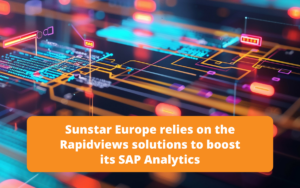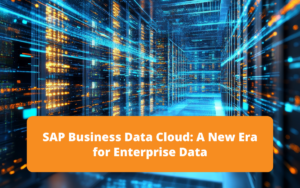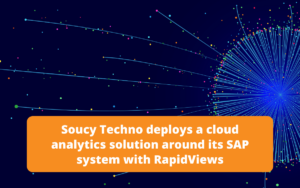Sunstar Europe built an analytics system around its SAP S/4HANA ERP, deployed in a public cloud environment, relying on the RapidViews platform and SAP Analytics Cloud and Microsoft Power BI reporting tools.
Sunstar is originally a Japanese company with a rather unique history. Ninety years ago, its activity focused on glues and patches used to repair bicycle tires. From glue, the company evolved into a specialist in tube production—tubes that were widely used in another industry: oral hygiene. Following the acquisition of the American company Butler, the Sunstar group launched the oral hygiene brand GUM in 1988.
Today, the Sunstar group is headquartered in Switzerland and employs over 4,000 people across 20 countries. The oral care market accounts for 60% of its revenue, with a wide range of products (interdental cleaning solutions, toothpaste, toothbrushes, rinsing liquids, accessories) primarily distributed in France to dental professionals, pharmacies, and various care and hospital centers. Sunstar’s products are available in over 100 countries worldwide.
A Modernized SAP System That Remained Incomplete…
It’s a familiar story: in 2018, Sunstar Europe faced a legacy SAP ECC ERP that had reached its limits. The solution had been heavily customized over the years and had become difficult to manage.
“We were closely observing what was being done with SAP S/4HANA. An on-premise implementation seemed risky—both in terms of cost and the resources required to manage it. We turned to the cloud as a way to return to more standard processes and reduce system management costs, while gaining agility, with faster ERP updates that include regulatory compliance and the ability to more easily integrate new entities,” explains Christophe Imbach, CIO of Sunstar Europe.
In 2018, Sunstar Europe chose to deploy SAP S/4HANA in public cloud mode, with the ERP going live in 2020. Between managing change, COVID-related constraints, and a lack of expertise with what was then an emerging offering, it took nearly 18 months to stabilize the solution.
“Today, we have no regrets: we have no more performance issues, and the platform is very robust,” says Christophe Imbach.
“However, all these challenges meant we couldn’t set up a BI solution for our new ERP in 2020. In 2023, we restarted the initiative and explored available options.”
First Reports Created in Just a Few Days
At the USF (French SAP Users Group), Sunstar Europe discovered how Soucy Techno, a Canadian company, rapidly implemented BI around its SAP S/4HANA ERP deployed in public cloud, combining SAP Datasphere, RapidViews, and Power BI. Inspired by this, Sunstar decided to carry out a POC (Proof of Concept) on RapidViews solutions.
“The connection between SAP S/4HANA, SAP Datasphere, RapidViews, SAC, and Power BI was established in just one day, and we were able to generate our first standard reports within a few days,” recalls Christophe Imbach.
Encouraged by the success of the POC, the company moved into the full project phase. SAP Datasphere serves as a buffer data warehouse between the ERP and the RapidViews platform. At the reporting layer, two tools are used: SAP Analytics Cloud (SAC) and Microsoft Power BI.
Thanks to RapidViews, analytics deployment was fast, with the project completed in just a few months. By June, the solution was already covering finance and procurement needs. By the end of September, it had been extended to marketing and sales teams.
“We are giving the business teams about six months to stabilize before making RapidViews our reference reporting platform. The goal is to offer a common set of reports for all European countries. When these reports evolve, changes will be reflected in the solution so everyone can benefit. Eventually, we’d also like to allow users who create their own reports to contribute them back into RapidViews so that colleagues can benefit,” concludes Christophe Imbach.


